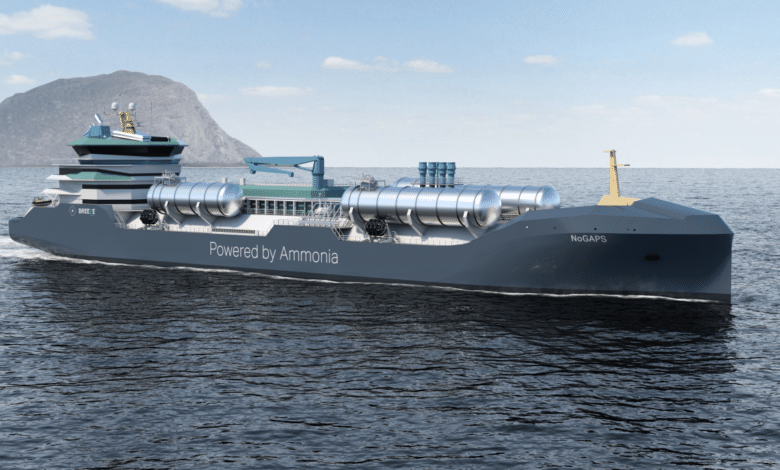Advancing ammonia fuel development without compromising safety

Within 30 years, shipping is forecast to transition from traditional fossil fuels to a multi-fuel mix, with 50% low- and zero-carbon fuels, 19% natural gas and 18% biomass. Under this scenario forecast by DNV, ammonia will become a significant source of power for the global fleet, representing a 35% share of the fuel mix.
Widely traded globally, about 70% of ammonia that is produced is used in fertilisers. Ammonia contains no carbon, making it a promising alternative fuel. It is not yet used to power ships, though Clarksons’ Green Technology Tracker shows 191 ships on order are ammonia-ready. This class notation indicates that the ship is being built to allow the shipowner the option to convert the vessel to use ammonia when the fuel becomes available. This might mean, for example, constructing an LNG-fuelled container ship with fuel tanks made to facilitate conversion to ammonia.
Some of the first ships that are expected to use ammonia as fuel are ammonia gas carriers. These ships can use cargo as fuel, minimising their time in port by eliminating the need for a separate bunkering operation. Additionally, their crews are familiar with the safe handling and transport of ammonia.
Maersk Mc-Kinney Møller Center for Zero Carbon Shipping (MMMCZCS) is working on multiple fronts to address the safe use of ammonia, including co-operating closely with Lloyd’s Register to identify ship designs and operational measures to mitigate the risks to crew. The study is called Recommendations for Design and Operation of Ammonia-Fuelled Vessels based on Multi-disciplinary Risk Analysis.
“Care of our seafarers and strong safety management are imperative”
MMMCZCS onboard vessel solutions chief technology officer, Claus Winter Graugaard, said the industry should not compromise safety and reliability in its eagerness to transform.
“Care of our seafarers and strong safety management are imperative,” said Mr Graugaard, adding the study provided “deep insights” to help guide the industry towards the safe use of ammonia as a fuel.
Exposure to ammonia fumes can be deadly, depending on the vapour concentration levels. This might mean limiting crew time spent in spaces containing ammonia equipment, installing sensors to detect ammonia leaks and enhanced ventilation requirements.
Ammonia can be detectable to most people at 25 parts per million (ppm), irritate the nose and throat at 400 ppm and cause convulsive coughing, severe eye, nose and throat irritation and possibly be fatal after 30 minutes of exposure at 1,700 ppm.
In addition, anhydrous ammonia is a hygroscopic compound, meaning it seeks water from the nearest source, including the human body. Anhydrous ammonia can dissolve body tissue, resulting in caustic burns. Because of their high moisture content, the eyes, lungs, and skin are at the greatest risk of caustic burns from ammonia.
These dangers are highlighted in another MMMCZCS report, Nordic Green Ammonia Powered Ships (NoGAPS), assessing the feasibility of an ammonia-powered gas carrier. This study brings together stakeholders across the value chain, including Nordic Innovation, Yara, Global Maritime Forum, BW Epic Kosan, DNV, MAN Energy Solutions, Wärtsilä, the Danish Maritime Authority and Breeze Ship Design.
At Nor-Shipping in June, DNV gave the go-ahead to the NoGAPS ammonia-powered gas carrier concept.
During the second phase of the NoGAPS project, a ship design will be developed for shipyard tender, leading to the possible construction of a handy-sized ammonia-powered gas carrier.
